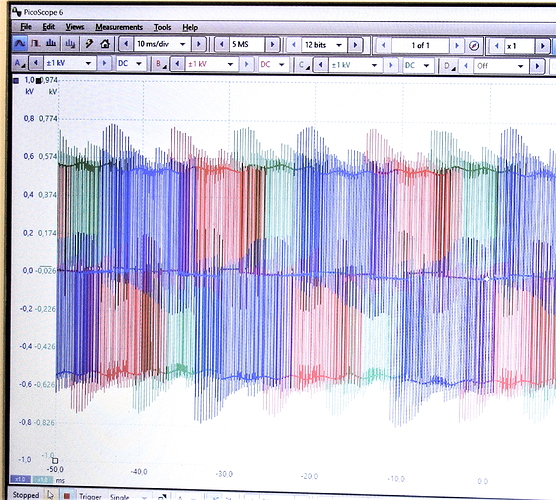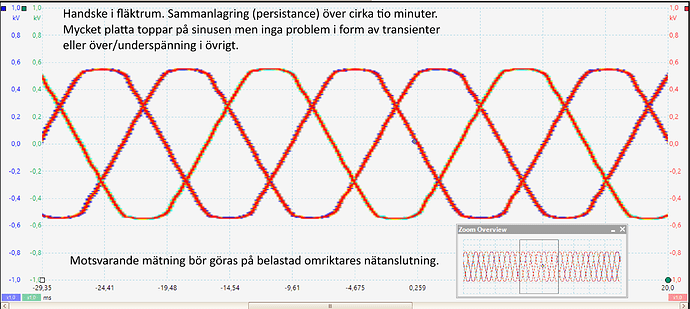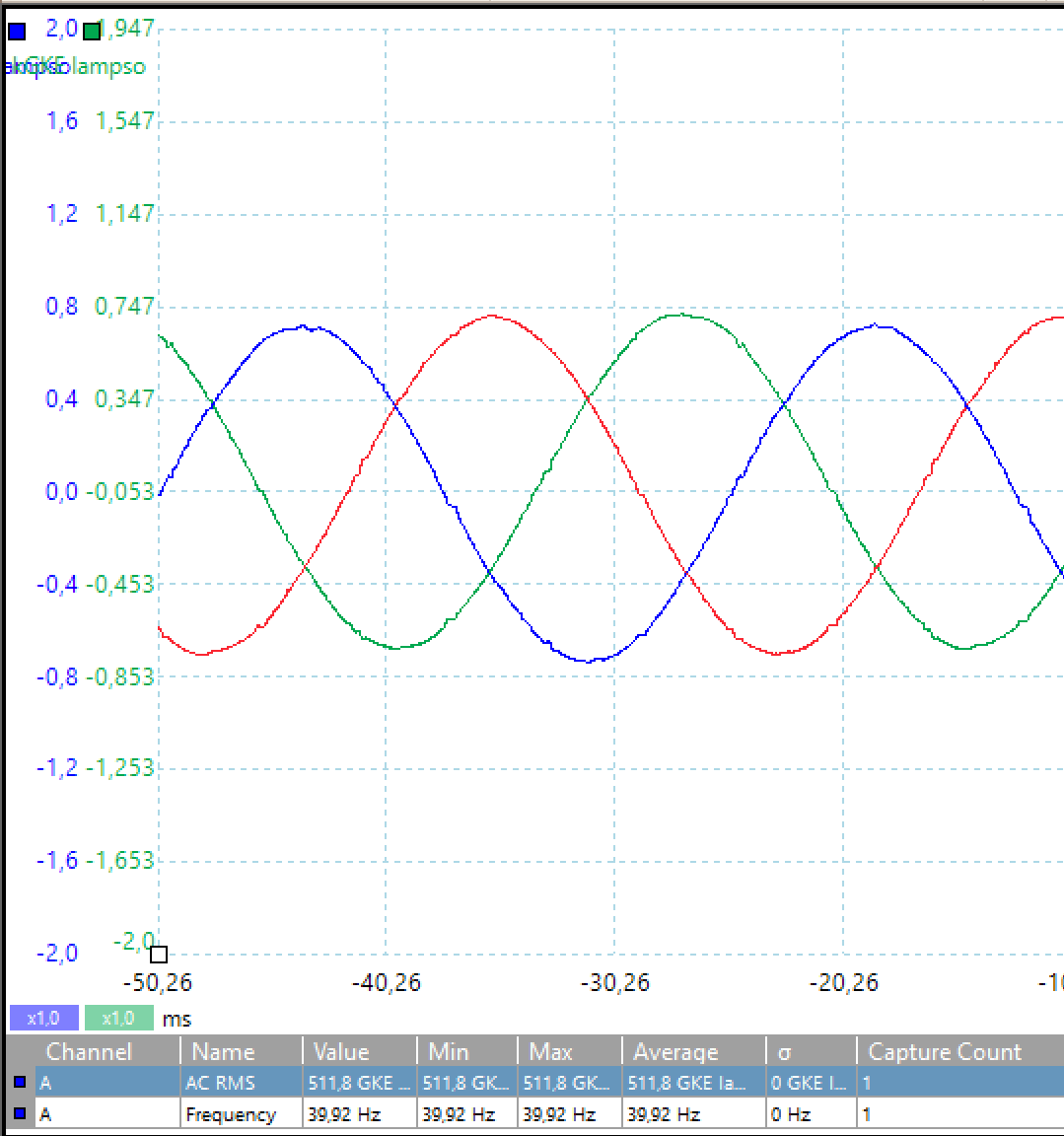The first time that you encounter a non-sinusoidal waveform with an analogue meter can be confusing.
Not all, but the majority of analogue meters measured average current or voltage and scaled that to RMS based on the form factor, or the ratio of average to RMS voltage for a sign wave.
The factor used is valid only for a sign wave.
A distorted wave will result in erroneous indications.
The meter may be measuring the average value with perfect accuracy and then applying the wrong form factor.
Can we make this work to our advantage in a VFD?
Conventional wisdom states that a VFD can not put out a higher voltage than the input voltage.
That is based on sine waves.
By crafting the wave shape, an output voltage may be produced with the same peak voltage as the supply voltage, but a higher RMS voltage.
It will be a compromise.
There will be more harmonics, and the steeper wave front will mean the percentage increase in RMS value will not result in as great a percentage increase in the effect of the greater RMS voltage, but surely some increase will result.
What are the thoughts on this?
A related question.
What does the effective wave form look like when the VFD output is set higher than the supply voltage?
This may happen unintentionally when the grid voltage drops below the setting of the VFD.
eg; Motor rated 230 Volts.
VFD output set to 230 Volts.
Grid drops to 210 or 220 Volts.
What will the smoothed output waveform look like?
Hello Bill,
I have been busy with things for a long while and almost forgot about Simpli. One thing I’ve done is a trip around Europe to look at things that needed some looking at. Like drives of different sorts. I covered around 4000 miles (say 6000 km) and was somewhat exhausted after the trip. I’ve moved from young and powerful 80- years to a little less young and powerful 90- recently. OK, exactly 80 it is.
Anyhow, your question is a very good one and the answer can be seen in attached diagrams: Most of the text is in Swedish - enjoy! :)
First, the PWM waveform showing the three phases (there is some overshoot that can be removed with a common-mode filter):
Then, the voltage supplying the inverters:
This recording was made in Persistence Mode and checks for transients in the supplying voltage. No transients. But rather “Flat Topped” because of lots of LED lights, computers and PWM drives. Not at all the clean sine wave you want. And that results in an RMS voltage that is below the 400 V we use over here.
The inverter has enough voltage in to produce a nice sinewave for the motor. At least at 40 Hz:
So far, so good. But this is what you get when trying to get to nominal speed and voltage (50 Hz and 400 V):
So, the answer to your question is that you need rated voltage (plus a few volts to cover drop in cables and inverter) if you want rated voltage from the inverter. If not, you get harmonics and slip increases. The motor will run hotter than normal and the sound emission isn’t nice either.
The recordings showing motor voltages were made with a low-pass filter (f0) 1000 Hz to make the pictures more revealing.
Interesting series of plots, thanks Gunnar.
A related topic - I know you don’t like the Fluke portable scopes for this kind of work, can you recommend a decent alternative? I’ve seen some newer Tektronix scopes that look interesting. Probably should be a whole different thread topic, I know.
Thank you ever so much Gunnar.
I’m a couple of years behind you and I have been slowing down the last couple of years.
Thank you for your explanation.
Will those flat top waveforms act as DC injection braking, robbing power and contributing to the heating or am I looking for something that isn’t there?
You have been missed online on the fora of your choice.
Yes Ben. My French mistress is still a favourite. But the PicoScopes are also good. I have tested a few Chinese ones. For the price, they are very good. We need another thread for that.
BTW, My tour through Europe doesn’t seem to have killed me. But I was really careful. Mask, no hotels and primitive eating. Nothing for Karin. So she stayed home.
No, no DC breaking. But triplenes are not rotating and does kind of the same thing. The heating is more due to increased slip when voltage goes down.
No hotels? Where did you sleep, in your car? I guess on balmy summer nights it wouldn’t be a problem…
Yes. In my Nissan NV 400 van. Not at all like an RV. But put in a bed and slept very well among the eighteen-whelers on the parking lots provided for them. And got along quite well with the “tough guys”.
Slept so well that I did it a few more times when I got home.



